Despite the rise of chatbots, messaging apps, and AI-driven self-service, over 64% of consumers still prefer speaking to a real person by phone when dealing with complex issues, according to Customer Contact Week’s 2023 report. And that preference isn’t just about convenience, it’s about trust, reassurance, and resolution.
The shift to digital-first communication hasn’t eliminated the need for voice. It’s made the quality of voice interactions more critical than ever. Toll-free numbers, long associated with credibility and national presence, now serve a new role in the customer journey, one that goes far beyond just saving callers a few cents.
But are toll-free numbers still worth the investment in a landscape dominated by mobile-first users and AI-powered automation? That’s the real question.
This article cuts through assumptions and tackles what actually matters: when toll-free numbers make sense, how to measure their value today, and how they fit into a modern, omnichannel communication strategy. Let’s start by understanding what toll-free numbers actually do in 2025, and why they aren’t as outdated as many assume.
Key Takeaways
- Toll-free numbers are still highly valuable in industries where trust, urgency, or regulation drive communication, such as healthcare, finance, and eCommerce.
- They’re no longer just about free calls, they now act as smart routing endpoints, trust signals, and conversion assets in omnichannel systems.
- Phone calls have become the escalation layer in customer service. People turn to them when issues are emotionally charged or critical, and toll-free access increases response confidence.
- For high-ticket sales or retention-driven businesses, toll-free numbers offer strong ROI through improved call conversion rates, reduced churn, and better customer lifetime value.
- They’re not for every business. Digital-native brands and Gen Z-focused models may benefit more from SMS, chat, or in-app support. But for many, toll-free remains a quiet powerhouse—when implemented strategically.
The Current Role of Toll-Free Numbers: More Than Just “Free Calls”
The phrase “toll-free” still evokes the idea of costless calling, but the real value of these numbers now lies elsewhere. In 2025, they serve as credibility markers, conversion assets, and intelligent routing points in complex communication ecosystems.
When a customer sees a toll-free number, especially one that starts with 800, 888, or 877, it signals something immediate: this company is legitimate, reachable, and prepared to talk. That trust factor alone makes toll-free numbers worth more than their per-minute cost. According to a 2024 Statista survey, 82% of U.S. consumers believe companies with toll-free numbers appear more established and trustworthy. That perception directly influences how users engage with ads, websites, and outbound campaigns.
But the utility isn’t just psychological but rather technical. Modern toll-free numbers plug directly into cloud-based VoIP platforms and CRM systems. That allows teams to:
- Route calls based on time, location, or customer status
- Trigger automatic CRM updates and contextual screen-pops during calls
- Log call activity alongside email, chat, and support history
- Track attribution across campaigns using call analytics
They’ve become a node in a broader omnichannel setup, not an isolated line on a dusty PBX.
For example, a single toll-free number can now serve different functions depending on where the customer is calling from or what marketing campaign brought them in. A healthcare provider might route senior callers directly to a Medicare specialist, while an eCommerce brand might use CRM segmentation to prioritize high-value customers and send them straight to live reps.
This is no longer about saving customers the cost of a call. It’s about using phone numbers as programmable, intelligent endpoints in a system built for speed, relevance, and personalization. And in that system, toll-free is often the most flexible input point available.
What the Data Says: Do Customers Still Call?
They do, and when they do, it’s not by accident. A 2023 report found that 59% of consumers initiate phone calls when they feel stuck or frustrated in other channels, especially when chatbots or help articles fail to resolve the issue. That’s not a decline, it’s a shift toward higher-value calls.
Phone support isn’t dead. It’s become the escalation layer in modern service delivery. And data across industries shows that it still plays a critical role:
By Industry:
- Healthcare: Patients with urgent issues or privacy concerns overwhelmingly choose voice. Toll-free lines are also required for some telehealth services under HIPAA-compliant frameworks.
- Finance: Identity verification, dispute resolution, and sensitive account management tasks still rely on real-time voice conversations. Phone support remains the top contact method across all age brackets in this sector.
- Retail & eCommerce: While first-touch interactions often begin with chat or email, phone calls convert 10x more frequently according to Voiso’s 2024 study.
- SaaS/Tech: Startups often deprioritize voice, but enterprise SaaS providers see better customer retention when onboarding and renewals include live, human support.
By User Group:
- Seniors: Pew Research shows that 35% of adults aged 65+ prefer telephone contact for all customer support interactions.
- Rural Areas: In regions with poor broadband access or patchy cellular coverage, phone remains the only reliable channel.
- Mobile-First Markets: In some international markets, mobile carriers still charge extra for data but not for toll-free calls, making voice the economical choice.
When Do People Pick Up the Phone?
Customers consistently default to voice when:
- The issue is emotionally charged (e.g., billing errors, cancellations)
- Resolution urgency is high (e.g., service outages, account lockouts)
- There’s financial or legal risk (e.g., healthcare coverage, banking errors)
- They’ve failed to resolve the issue through other channels
In short, phone support has become the channel of consequence. People turn to it when the stakes are high, and toll-free numbers often serve as the bridge between digital noise and meaningful resolution.
Psychological Value: Why Toll-Free Still Signals Credibility
When people see a toll-free number, they don’t just think “free.” They think legit.
That mental shortcut matters more than most businesses realize. According to a 2024 HubSpot survey, 71% of consumers say they’re more likely to trust a business that displays a toll-free number prominently, especially if it’s paired with a recognizable prefix like 800 or 888. For new visitors or first-time buyers, that small signal often tips the scale toward engagement or conversion.
Toll-free numbers imply national reach, even if the company operates from a single zip code. They remove the sense of “local business uncertainty” and replace it with the image of stability, infrastructure, and availability. For remote-first or online-only companies, this perception is priceless.
That’s why brands still invest in vanity numbers, the most visible toll-free assets. Numbers like 1-800-FLOWERS or 1-800-CONTACTS don’t just drive recall. They become part of the brand itself. According to HealthcareSuccess, vanity numbers can increase ad response rates by 33% compared to generic numeric strings, especially in channels like radio and TV where visual recall is limited.
And this branding lift translates to performance:
- Higher call volume from paid search ads when a recognizable number appears in the extension
- Longer average call duration (often tied to buyer intent)
- Increased first-call resolution, driven by stronger caller trust from the start
Even without a vanity string, toll-free numbers still outperform local lines in new customer acquisition campaigns. It’s not the technology that makes the difference, it’s the signal. And in an age of SMS scams, AI-generated voice fraud, and burner numbers, that signal carries more weight than ever.
Where Toll-Free Still Wins: Key Use Cases in 2025
Toll-free numbers don’t belong in every touchpoint, but in certain industries, they still outperform every digital alternative. Here’s a snapshot of where they continue to drive real business outcomes:
| Industry | Why Toll-Free Still Matters |
| Healthcare | Voice calls support HIPAA-compliant communication, urgent triage, and accessibility for seniors. |
| Finance | Toll-free lines support PCI-DSS compliance, identity verification, and high-trust transactions. |
| Hospitality | Complex reservations, change requests, and service recovery happen faster through live calls. |
| eCommerce | Call-in customers spend more on average; sales reps can upsell and resolve objections live. |
| SaaS/Tech | Enterprise onboarding, troubleshooting, and renewals benefit from guided support via voice. |
In sectors where regulations, urgency, or human touch define the customer journey, toll-free calls don’t just add convenience, they reduce churn, increase conversion, and extend customer lifetime value.
The ROI isn’t in the call, it’s in what the call makes possible: trust, clarity, and closure.
Toll-Free Number ROI vs. Cost in 2025
Toll-free service has a cost, but the more relevant question is whether the return outweighs it.
Here’s what the actual cost structure looks like in 2025:
- Monthly fee: $10–$35 depending on provider and features
- Per-minute rate: $0.02–$0.10, based on volume and destination
- Advanced features (IVR, CRM sync, AI routing): Often bundled in VoIP packages, or charged $20–$50/month
- SMS capability (if supported): $0.007–$0.01 per message
It’s not negligible, but when measured against outcomes, it often pays for itself.
Where the ROI Comes From:
Call tracking data tells a clear story. According to Voiso’s 2024 Call Intelligence Report:
- Call-in leads from PPC campaigns convert at 10%–15%, compared to 1%–3% for chat or form submissions
- Cost-per-lead (CPL) is often lower for toll-free calls than digital leads in high-ticket verticals like finance, legal, and healthcare
- Customers who call are 28% more likely to remain active or return within 90 days
That last stat speaks directly to customer retention, not just acquisition.
Automation vs. Staffing:
For businesses concerned about staffing cost, intelligent call routing and voice bots close the gap. AI-driven IVRs handle:
- Initial triage (collecting name, reason, urgency)
- Routing based on CRM data or caller behavior
- FAQs and repeat tasks (e.g., appointment confirmation, balance checks)
This automation cuts average call handling time by 30%–40%, especially in industries with recurring queries. And when calls escalate to humans, the routing context already reduces friction.
When the Spend Makes Sense:
You don’t need toll-free service if your average sale is $10. But when:
- Average order value > $100
- Churn reduction is a priority
- Your market expects a “real company” presence
- You’re running high-intent ad campaigns
…then voice contact becomes a profit center, not an expense line.
What Toll-Free Numbers Can Do That Digital Channels Can’t
Some customer moments don’t translate to text. A misplaced charge, a frozen account, a last-minute cancellation, these situations demand tone, empathy, and real-time problem-solving. And digital channels often fail under pressure. Voice fills that gap.
In crisis or emotionally loaded scenarios, toll-free numbers remain the fastest route to human reassurance. According to Zendesk’s 2023 CX Benchmark Report:
- 77% of customers say speaking to a live agent improved their trust in a company during a difficult moment
- 41% abandoned brands after unresolved chat or email interactions during high-stakes issues
Text strips context. Chat misinterprets tone. Email delays resolution. And when a customer feels unheard, the damage goes beyond the issue, it becomes a churn risk.
Phone support, especially via toll-free entry points, excels at:
- De-escalating frustration through human tone
- Preventing cancellations with real-time offer adjustments
- Clarifying complex billing or account issues without back-and-forth delays
- Providing emotional support for sensitive interactions (healthcare, bereavement, financial hardship)
It’s not about the tech, it’s about the outcome. And when customers need closure, a toll-free call often delivers what digital can’t.
Limitations and Declining Use Cases for Toll-Free Numbers
Toll-free numbers are no longer a default need, and in some contexts, they’ve lost relevance entirely.
The original value proposition, free long-distance calling, has faded. Most mobile plans now include unlimited nationwide calling. For many consumers, especially under 35, every call is effectively toll-free already. The technical benefit doesn’t register.
The cultural shift goes even deeper. Gen Z prefers asynchronous, low-friction communication. According to a 2024 survey by YPulse, 68% of Gen Z consumers try to avoid phone calls altogether, citing anxiety, inconvenience, or a lack of perceived control. For simple tasks like checking an order status or updating account info, self-service wins every time.
And in certain environments, toll-free doesn’t add meaningful value:
- Digital-native brands often thrive without voice support. Their customer base expects fast self-service, not phone trees.
- Low-margin businesses can’t justify the cost of staffing or call infrastructure when customer interactions are brief and predictable.
- Transactional support models, think food delivery apps or digital subscriptions, typically favor chat or in-app flows.
That’s not to say toll-free should be abandoned across the board. But the assumption that it belongs on every site, in every channel, is no longer valid. The decision needs to be based on real user needs, not tradition.
Do You Need a Toll-Free Number? Self-Assessment Checklist
Still unsure whether toll-free service fits your business model? Use this checklist to clarify the decision. If you answer “yes” to most of the following, it’s worth the investment.
Toll-Free Viability Checklist:
- Do you operate nationally or in multiple regions?
- Do your customers handle sensitive or emotional issues that benefit from human interaction?
- Is trust a barrier to conversion in your industry (e.g., finance, healthcare, high-ticket services)?
- Do you target seniors, non-native tech users, or rural populations?
- Is your average customer LTV high enough to justify personalized phone support?
- Do you run marketing campaigns that rely on direct response or attribution?
- Would you benefit from real-time feedback and escalation handling that chat can’t provide?
If you’re checking two or more boxes, toll-free isn’t just still relevant, it’s likely underutilized in your current setup.
Alternatives to Traditional Toll-Free: Smarter Options in 2025
Toll-free service isn’t the only way to offer real-time voice support in 2025. For teams with limited infrastructure, or for those who prefer modular options, there are newer, lighter-weight alternatives that still meet customer expectations.
Here are five modern solutions that replicate the benefits of toll-free without the full-scale investment:
Local DIDs with call routing
A DID (Direct Inward Dialing) number tied to a specific city or region can serve national audiences through smart call routing rules. It’s more affordable and maintains local presence while supporting global operations.
Call-back widgets
These offer a mobile-first UX advantage. Instead of waiting on hold, visitors submit a quick form and receive a scheduled call. It reduces abandonment and respects user time, especially on mobile.
Smart IVRs with escalation logic
Today’s IVRs don’t just dump callers into endless menus. AI-powered systems can triage based on voice input or CRM tags, routing high-value queries to live reps and handling basic questions automatically.
In-app call functionality for SaaS/mobile
SaaS platforms and mobile apps now integrate native voice buttons. This allows users to initiate calls without leaving the interface, keeping the experience consistent while maintaining attribution visibility.
Toll-free texting integration
SMS/MMS functionality turns a static toll-free number into a two-way conversation tool. It’s ideal for appointment reminders, order tracking, and quick support responses, without the need to staff live agents for every interaction.
Each of these options supports the same goals as traditional toll-free, availability, trust, and resolution. without relying on legacy telephony infrastructure.
Implementation Tips: How to Do Toll-Free Right in 2025
Getting toll-free right isn’t about just buying a number, it’s about building the right ecosystem around it. Here’s what smart implementation looks like in 2025:
- Choose a provider that supports voice, SMS, and analytics
A number without data is just noise. Go with providers (like DIDlogic) that offer cloud PBX, SMS capabilities, real-time dashboards, and multi-channel reporting.
- Route calls dynamically
Use call routing based on geography, lead source, previous behavior, or account type. One-size-fits-all routing causes missed opportunities and longer handle times.
- Connect your tech stack
Sync your toll-free line with CRM, helpdesk, and business intelligence platforms. That means reps see caller context instantly, and your team can pull attribution data across campaigns.
- Set fallbacks and safety nets
Don’t make users wait. Offer voicemail when call queues are full. Trigger SMS redirects when agents aren’t available. Or let users schedule call-backs directly.
- Track calls like you track clicks
Calls aren’t just noise, they’re intent signals. Integrate your toll-free traffic into tools like GA4, HubSpot, or Salesforce to understand CPL, ROAS, and lifetime value attribution.
Done right, toll-free becomes a data-rich, conversion-driving channel, not just a phone number.
Final Thoughts: Toll-Free Is Not Dead — It’s Evolved
Toll-free numbers haven’t disappeared, they’ve adapted. In a world where automation, text, and chat dominate first-touch interactions, phone calls now represent depth over volume. They’re the moments when trust needs to be restored, problems need real resolution, or deals need human voices. But toll-free isn’t a one-size-fits-all solution anymore.
It’s most valuable when used strategically, inside industries where trust, urgency, or high-ticket decisions still drive calls. And it works best when integrated, not isolated. That means syncing it with CRMs, routing tools, IVRs, and SMS, not treating it like a separate support silo.
Voice is no longer the default. It’s the differentiator. And for the right business, toll-free is still one of the clearest ways to stand out.










